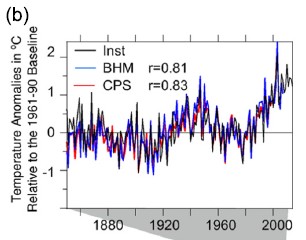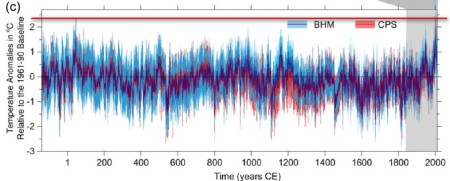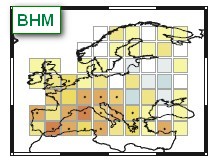In several previous posts (here and here) I commented on the RAF (Radiation Amplification Factor) which tells us how much a change in the total ozone column will cause a change in UVB irradiation. The question is usually asked to quantify the danger that a thinning ozone layer will cause an increase in UVB radiation which might cause an increase in skin cancer risk. The often extremist scare on the danger of UVB radiation has faded somehow in the last years, as cases of rickets caused by too few UVB exposure has again shown up (read this paper). But at many beaches, you can see overprotective mothers putting their children in UV filtering jump-suits, which might be an overreaction triggered by the scary media stories, which usually start in Western countries at the first warm and sunny days of the year.
The RAF is defined as: RAF = – [ln(DU2/DU1)/ln(UVB2/UVB1)]
where the indices 1 and 2 correspond to two different situations. The following graph shows the situation today, a second (nearly) blue sky day following the first. As these dates and the time of measurements are so close, we may assume a constant length for the sun rays through the atmosphere, and constant attenuations. The AOT (atmospheric optical thickness) which measures the turpitude of the atmosphere was 0.055 the first day and 0.068 the second day; these are very close values. For comparison the AOT was 2.197 on the 19 April, which had a heavy cloud cover. The solar zenith angles where 38.4 resp. 38.0 degrees.

With the readings shown on the graph, we find an RAF = 1.10
In a much a much more extensive paper I wrote in April 2013, the corresponding value is 1.08 (computed over 5 consecutive days).
Expressed as simple percentages one can roughly say that during the two days of 20 and 21 April 2016 a decrease of 5% of the total ozone column caused a rise of the UVI of 9% (percentages w.r. to the first day). Beware to not extrapolate linearly this conclusion, as the RAF is defined by non-linear logarithms!
______________________________________________________
27 Sep 2018> correction of the RAF formula




